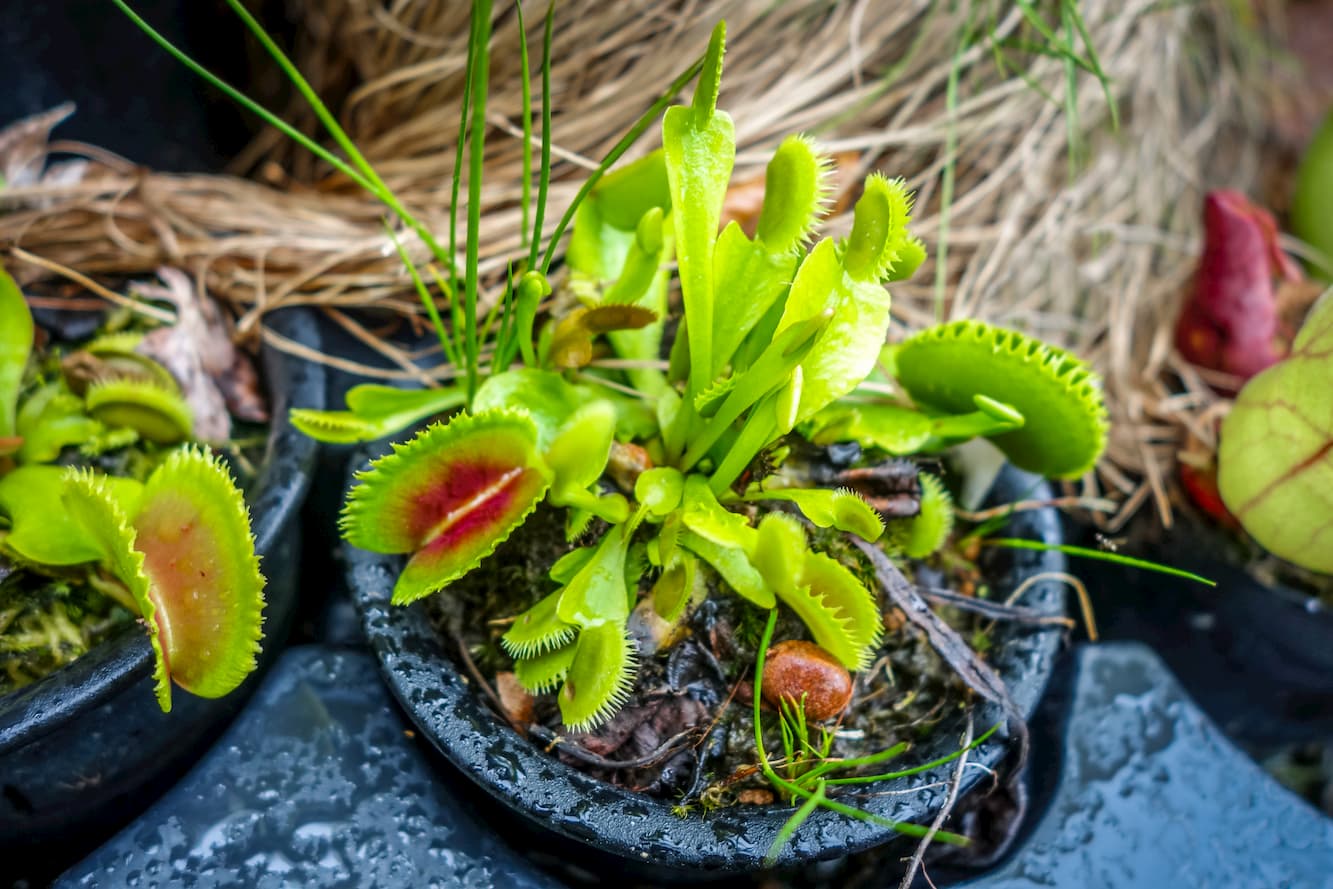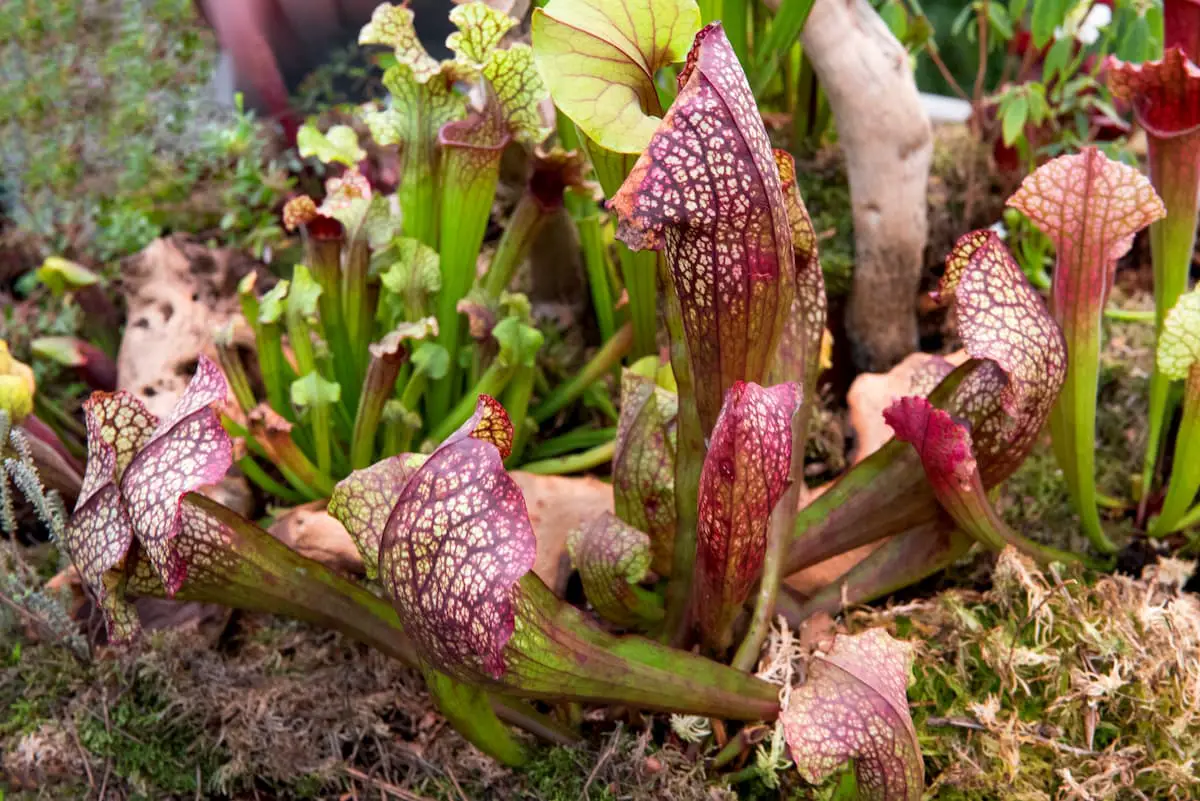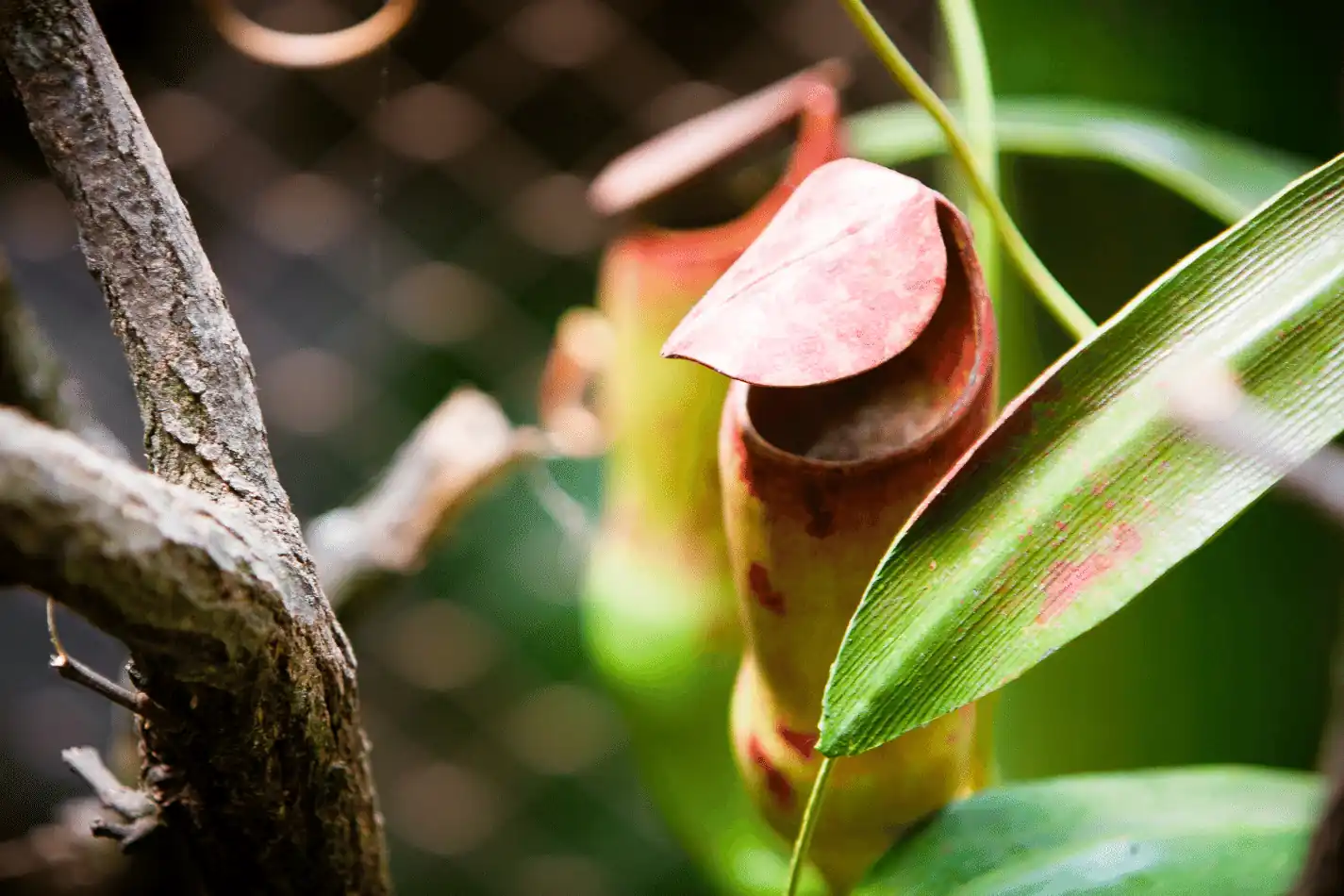Did you know that Venus fly traps can consume up to 3-4 insects in a month?
Understanding the intricacies of caring for these fascinating plants is crucial for their well-being. From feeding frequency to troubleshooting common issues, mastering the proactive techniques can ensure your Venus fly trap thrives.
Stay tuned to uncover the secrets of optimal care that will keep your carnivorous plant healthy and thriving in your care.
Key Takeaways
- Regular feeding every two weeks promotes Venus Fly Trap health
- Adjust feeding during dormancy to match plant’s activity level
- Seek professional assistance for persistent issues or unusual conditions
- Monitor plant for signs of distress and seek help if care adjustments are ineffective
Understanding Feeding Frequency
To ensure the optimal health of your Venus Fly Trap, feed it approximately once every two weeks. Providing your plant with the right amount of food is crucial for its well-being.
Venus Fly Traps are amazing creatures that need a balance in their diet to thrive. By feeding your plant regularly, you’re helping it grow strong and vibrant.
Feeding your Venus Fly Trap is a way to show your care and attention. It’s like giving a friend a meal when they’re hungry. This act of nurturing creates a bond between you and your plant, making you feel more connected to nature.
Choosing Suitable Prey
When selecting prey for your Venus Fly Trap, ensure it is small enough to fit inside the trap easily.
Opt for insects like fruit flies, ants, or small spiders that are proportionate to the size of the trap’s mouth. Larger prey may cause the trap to close improperly or even damage the sensitive trigger hairs.
Remember, your Venus Fly Trap is a delicate beauty that thrives on the right-sized meals.
Prey Selection Guide
| Prey Type | Size | Frequency |
|---|---|---|
| Fruit Flies | Small | Every 1-2 weeks |
| Ants | Tiny | Every 2-3 weeks |
| Small Spiders | Petite | Every 3-4 weeks |
| Gnats | Miniature | Every 1-2 weeks |
| Moths | Small | Occasional treat |
Keep in mind that overfeeding can stress your plant, so stick to the recommended frequencies. By selecting suitable prey and feeding your Venus Fly Trap responsibly, you’ll ensure it remains a healthy, thriving member of your plant family.
Avoid Overfeeding Pitfalls
Are you inadvertently stressing your Venus Fly Trap by overfeeding it with prey that’s too large or too frequent?
While it may be tempting to offer your plant a constant buffet of insects, overfeeding can actually harm your Venus Fly Trap. These plants are designed to capture and digest prey intermittently, not constantly.
When you overfeed your plant, it expends excess energy on digestion, which can weaken it over time. To avoid this pitfall, aim to feed your Venus Fly Trap one small insect every 1-2 weeks.
This feeding schedule allows your plant to derive the nutrients it needs without becoming overwhelmed.
Adjusting Feeding in Dormancy
During the dormancy period of your Venus Fly Trap, adjusting its feeding schedule is crucial for its health and well-being.
It’s important to remember that while your plant may be less active during this time, it still requires some care to thrive.
Here are some tips to help you adjust the feeding of your Venus Fly Trap during dormancy:
| Feeding Frequency | Prey Size |
|---|---|
| Decrease | Smaller insects |
| such as fruit flies | |
| or small crickets |
Monitoring Nutrient Intake
You need to keep a close eye on your Venus fly trap’s nutrient intake to ensure its health.
Look out for signs of nutrient deficiency, follow a correct feeding schedule, and adjust the soil pH as needed.
Monitoring these factors will help you maintain a thriving Venus fly trap.
Nutrient Deficiency Signs
To ensure your Venus Fly Trap remains healthy, it is crucial to watch for signs of nutrient deficiencies as an integral part of monitoring its nutrient intake.
Nutrient deficiencies can manifest in various ways, affecting the plant’s growth and overall well-being. Here are some common signs to look out for:
| Nutrient | Signs of Deficiency |
|---|---|
| Nitrogen | Yellowing leaves |
| Phosphorus | Poor root development |
| Potassium | Weak stems |
Correct Feeding Schedule
Keep your Venus Fly Trap thriving by establishing a consistent feeding schedule to monitor its nutrient intake effectively.
Feed your plant one or two insects every 2-4 weeks during its active growing season. Avoid overfeeding, as this can lead to stress and damage. Ensure the prey is small enough for the trap to close completely around it.
If you notice the traps turning black or rotting, scale back on feeding to prevent further harm. Remember, each trap can only capture a limited number of insects before it dies off naturally.
Adjusting Soil Ph
Maintain optimal nutrient absorption for your Venus Fly Trap by carefully monitoring and adjusting the soil pH level. Venus Fly Traps thrive in acidic soil with a pH level between 4.5 and 5.5.
To ensure your plant receives the right nutrients, regularly test the soil pH using a testing kit. If the pH is too high, meaning it’s too alkaline, you can lower it by adding sphagnum peat moss or distilled water.
On the other hand, if the pH is too low, indicating it’s too acidic, you can raise it by adding some dolomite lime.
Recognizing Signs of Malnutrition
Proper observation of your Venus fly trap’s physical condition is crucial for identifying signs of malnutrition.
Look out for pale or yellow leaves, slow growth, and smaller traps than usual. These could indicate that your plant isn’t getting enough nutrients.
If you notice these signs, it’s essential to take action promptly to prevent further issues. Malnutrition can weaken your Venus fly trap, making it more susceptible to pests and diseases. By recognizing these signs early on, you can provide the necessary care to help your plant thrive.
To address malnutrition, consider adjusting the feeding schedule or providing a nutrient-rich soil mix. Remember, prevention is key when it comes to keeping your Venus fly trap healthy. Stay attentive to its needs and make adjustments as required.
By understanding the signs of malnutrition and taking proactive measures, you can ensure that your plant continues to flourish and capture its prey effectively.
Addressing Feeding-related Pest Issues
To keep your Venus Fly Trap healthy, it’s crucial to prevent pests by maintaining good hygiene practices. By identifying common pests early on, you can take swift action to protect your plant.
Remember to always follow safe feeding practices to minimize the risk of introducing pests to your Venus Fly Trap.
Pest Prevention Techniques
Combatting feeding-related pests in Venus fly traps requires vigilance and strategic placement of traps.
To prevent unwanted critters from invading your plant, ensure you place your fly trap in a spot with adequate sunlight and good air circulation.
Make sure not to overfeed your trap, as excess food can attract pests. Regularly clean up any uneaten prey to avoid attracting insects that may harm your plant.
Additionally, consider using sticky traps or insecticidal soap as a preventive measure.
Identifying Common Pests
When dealing with feeding-related pest issues in Venus fly traps, the key is to identify common pests early on for effective control.
Common pests that may affect your Venus fly trap include fungus gnats, fruit flies, and spider mites. Here is a quick reference table to help you identify these pests:
| Pest | Description | Signs of Infestation |
|---|---|---|
| Fungus Gnats | Small black flies hovering around | Larvae in soil, yellowing leaves |
| Fruit Flies | Tiny flies near the plant | Presence on traps, damaged leaves |
| Spider Mites | Almost invisible, web-like substance | Yellow speckling, fine webbing |
Safe Feeding Practices
For effective control of feeding-related pest issues in Venus fly traps, practice safe feeding practices to ensure the health of your plant.
When feeding your Venus fly trap, only use live insects that are appropriate in size – avoid overfeeding as this can attract unwanted pests.
Always ensure that the insects you feed your plant are free of pesticides, as these can harm your plant. Inspect the insects for any signs of other pests before introducing them to your Venus fly trap.
Seeking Professional Help if Needed
If you encounter persistent issues with your Venus fly trap despite your best efforts, consider seeking help from a professional plant specialist.
While caring for your Venus fly trap, sometimes challenges may arise that go beyond your expertise.
A plant specialist can offer valuable insights and solutions tailored to your specific plant’s needs. Remember, it’s okay to ask for help when you need it.
To guide you further, below is a table highlighting when to seek professional help:
| Signs You Might Need Professional Help | Action to Take |
|---|---|
| Your Venus fly trap shows no signs of improvement after adjusting care routines. | Seek advice from a plant specialist to diagnose underlying issues. |
| The plant displays unusual discoloration or stunted growth despite proper care. | Consult with a professional to identify potential nutrient deficiencies or diseases. |
| You notice pests infesting your Venus fly trap and home remedies have not been effective. | Contact a specialist for safe and efficient pest management strategies. |
| Your plant exhibits signs of distress such as wilting or browning leaves persistently. | Seek immediate assistance to prevent further damage and potential loss. |
| You feel overwhelmed or uncertain about how to best care for your Venus fly trap. | Reach out to a professional for personalized guidance and reassurance. |
Conclusion
In conclusion, mastering the care of your Venus fly trap involves proactive techniques such as understanding feeding frequency, choosing suitable prey, and monitoring nutrient intake.
By avoiding overfeeding pitfalls and adjusting feeding in dormancy, you can ensure your plant remains healthy and thriving.
Keep an eye out for signs of malnutrition and address any feeding-related pest issues promptly.
Remember, seeking professional help if needed can help ensure the long-term health of your Venus fly trap.



Leave a Reply